 Kawai Digital Pianos | Updated Review & Consumer Report | December 1, 2025 | All Kawai Digital Pianos including the ES120, ES520, ES920, CN201, CN301, CA401, CA501, CA701, CA901, DG30, NV5S, NV10S, etc.
Kawai Digital Pianos | Updated Review & Consumer Report | December 1, 2025 | All Kawai Digital Pianos including the ES120, ES520, ES920, CN201, CN301, CA401, CA501, CA701, CA901, DG30, NV5S, NV10S, etc.
Kawai piano company is a leader in the world of acoustic and digital pianos. Given that our focus is on new digital pianos, then that’s what we talk about on this website and in this Kawai digital piano review and report. There are many other good digital piano brands out there, but you will find that Kawai does have some exclusive features that make these models very impressive when it comes to a very realistic piano playing experience.
Please read the info below to find out about the 2025 Kawai digital pianos and the many features and functions these models have.
*SPECIAL UPDATE: For the month of December or when supplies run out at Kawai warehouse, whichever comes first, there is an unadvertised “instant rebate” on a few specific models of Kawai digital piano models off the regular internet discount price, which rarely happens. If you decide that one of these models will best fit your musical needs and budget, then before you purchase anything anywhere, contact us right away because not only can we help you get that instant rebate on specific models, but also an extra discount beyond that one!
*We also have access to special Kawai credit financing that they are offering right now for the month of December (as we do for other brands when they have it). They seem to have some very good programs right now, especially on some of their higher priced instruments. Please ask us if you want more info on that.
 The Kawai piano company was founded nearly 100 years ago in 1927 and its international headquarters is in Hamamatsu, Japan which is where its founder, Koichi Kawai was born back in 1886. Kawai’s US headquarters is in the city of Rancho Dominguez, Southern California.
The Kawai piano company was founded nearly 100 years ago in 1927 and its international headquarters is in Hamamatsu, Japan which is where its founder, Koichi Kawai was born back in 1886. Kawai’s US headquarters is in the city of Rancho Dominguez, Southern California.
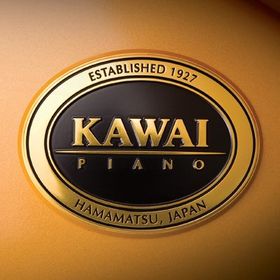 Kawai is a relatively small company in the piano manufacturing world as compared to other companies like Yamaha, Casio, and Roland. This is because Kawai only makes acoustic & digital pianos whereas Yamaha and Casio and Roland are more mainstream with a variety of other products such as audio equipment, calculators, watches, keyboards, guitar products, recording gear, motorcycles & snowmobiles (Yamaha), and many other things.
Kawai is a relatively small company in the piano manufacturing world as compared to other companies like Yamaha, Casio, and Roland. This is because Kawai only makes acoustic & digital pianos whereas Yamaha and Casio and Roland are more mainstream with a variety of other products such as audio equipment, calculators, watches, keyboards, guitar products, recording gear, motorcycles & snowmobiles (Yamaha), and many other things.
KAWAI PORTABLE DIGITAL PIANOS
ES60, ES120, ES920
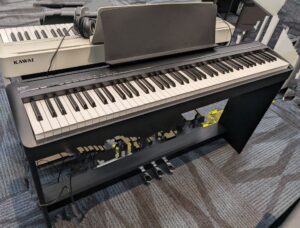 Currently, the Kawai piano company worldwide has 16 distinct digital piano models for the US market which cover a huge span of digital piano technologies, price ranges, and sizes. From a lower discount price of $949 for the ES120 portable digital piano all the way up to about $14,500 price for the Novus NV10S Hybrid grand action furniture cabinet piano, Kawai offers a huge choice of models. Kawai has a digital piano that can fit the musical needs of most piano shoppers. In the lower price range in the US market Kawai has 3 portable digital pianos under $2000 with built-in speakers which includes the newer ES60 at $499 discount price, the ES120 ($949 internet price) and the top of the line ES920 self-contained portable model ($1949 discount price).
Currently, the Kawai piano company worldwide has 16 distinct digital piano models for the US market which cover a huge span of digital piano technologies, price ranges, and sizes. From a lower discount price of $949 for the ES120 portable digital piano all the way up to about $14,500 price for the Novus NV10S Hybrid grand action furniture cabinet piano, Kawai offers a huge choice of models. Kawai has a digital piano that can fit the musical needs of most piano shoppers. In the lower price range in the US market Kawai has 3 portable digital pianos under $2000 with built-in speakers which includes the newer ES60 at $499 discount price, the ES120 ($949 internet price) and the top of the line ES920 self-contained portable model ($1949 discount price).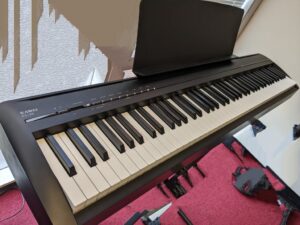 These 3 portable, self-contained digital pianos have 88 piano weighted and graded key actions which feel very good to play in their respective price ranges. Each of these models focuses on the “piano playing experience” within their price range along with life-like acoustic piano sound, key actions, pedaling, and dynamic expression when you play them. I have played each one many times, and out of all the top brands out there including Yamaha, Casio, Roland, and Korg, these 3 specific digital pianos offer arguably the best piano playing experience in their respective price ranges for portable digital pianos.
These 3 portable, self-contained digital pianos have 88 piano weighted and graded key actions which feel very good to play in their respective price ranges. Each of these models focuses on the “piano playing experience” within their price range along with life-like acoustic piano sound, key actions, pedaling, and dynamic expression when you play them. I have played each one many times, and out of all the top brands out there including Yamaha, Casio, Roland, and Korg, these 3 specific digital pianos offer arguably the best piano playing experience in their respective price ranges for portable digital pianos.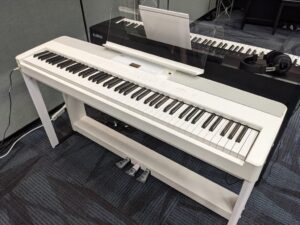 When you put together a combination of powerful internal speaker systems, responsive and correctly weighted key actions, natural sounding recorded piano samples from Kawai grand pianos, and responsive pedaling with long sustain times, these 3 models are hard to beat. As you go up in price from the ES60 to the ES120 at $949 and then to the noticeably more realistic ES920 at $1949 (without optional stands and upgraded single or triple pedals), there is a significant different among all 3 models.
When you put together a combination of powerful internal speaker systems, responsive and correctly weighted key actions, natural sounding recorded piano samples from Kawai grand pianos, and responsive pedaling with long sustain times, these 3 models are hard to beat. As you go up in price from the ES60 to the ES120 at $949 and then to the noticeably more realistic ES920 at $1949 (without optional stands and upgraded single or triple pedals), there is a significant different among all 3 models.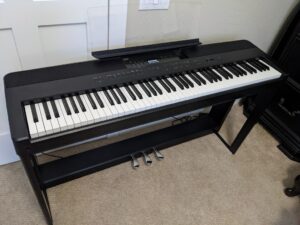 As you go from one model of the ES series to the next, the piano sound realism (piano sound engine), key action with different weighted keys for each model and additional key sensors, pedaling response, and the quality of internal speakers gets better and better. There are additional instrument sounds and functions along with Bluetooth audio & MIDI streaming on each model and that’s an added bonus to have those useful features. But it’s really mostly about how these models are at reproducing the piano playing experience in the most realistic way possible at their prices.
As you go from one model of the ES series to the next, the piano sound realism (piano sound engine), key action with different weighted keys for each model and additional key sensors, pedaling response, and the quality of internal speakers gets better and better. There are additional instrument sounds and functions along with Bluetooth audio & MIDI streaming on each model and that’s an added bonus to have those useful features. But it’s really mostly about how these models are at reproducing the piano playing experience in the most realistic way possible at their prices.So when it comes to portable digital piano from $900 to $1900, you cannot go wrong with these very popular Kawai ES models and we highly recommend them. You can read our detailed reviews of these 3 models at the following links: Kawai ES60 Review Kawai ES120 Review Kawai ES920 Review
PRO STAGE & STUDIO DIGITAL PIANOS
MP7SE, MP11SE, VPC1
$2000 to $3500
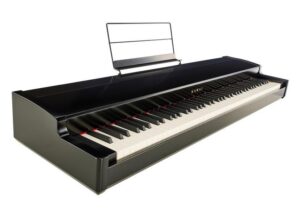 Kawai also has 3 models of portable digital pianos without built-in speakers (usually referred to as stage or studio digital pianos) which include the MP7SE ($2349 discount price), MP11SE ($3699 discount price), and VPC1 controller piano $2499 discount price. The VPC1 is especially unique because it has no internal sounds or functions and no buttons, sliders, knobs, or display screens of any kind on the cabinet.
Kawai also has 3 models of portable digital pianos without built-in speakers (usually referred to as stage or studio digital pianos) which include the MP7SE ($2349 discount price), MP11SE ($3699 discount price), and VPC1 controller piano $2499 discount price. The VPC1 is especially unique because it has no internal sounds or functions and no buttons, sliders, knobs, or display screens of any kind on the cabinet.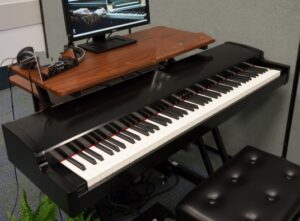 You would connect an external audio system to your computer or iPad to hear those piano sounds you are playing. Some people may prefer this configuration who are comfortable with computers and are OK with always needing to use a dedicated computer with added sounds for their VPC1 piano rather than have the convenience of built-in Kawai digital piano sounds already in the digital piano. This VPC-1 also needs external speakers/monitors because it has no built-in speakers and some people prefer it that way. The key feature in the VPC1 is its all wooden pro key action which is a specialized key action only available in this model.
You would connect an external audio system to your computer or iPad to hear those piano sounds you are playing. Some people may prefer this configuration who are comfortable with computers and are OK with always needing to use a dedicated computer with added sounds for their VPC1 piano rather than have the convenience of built-in Kawai digital piano sounds already in the digital piano. This VPC-1 also needs external speakers/monitors because it has no built-in speakers and some people prefer it that way. The key feature in the VPC1 is its all wooden pro key action which is a specialized key action only available in this model.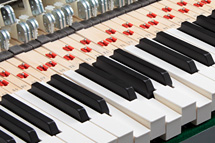 The VPC1 is the only 88-weighted key pro controller digital piano out there with long extended wooden keys. That feature gives the VPC1 an “edge” over the competition, especially in this price range because no one else has wooden keys in their controller digital pianos. So if all you need is a more organic piano type key action in a portable digital piano to control external piano/instrumental sounds from a computer or other external MIDI sound device and you want it for less than $2500, then the VPC1 is it.
The VPC1 is the only 88-weighted key pro controller digital piano out there with long extended wooden keys. That feature gives the VPC1 an “edge” over the competition, especially in this price range because no one else has wooden keys in their controller digital pianos. So if all you need is a more organic piano type key action in a portable digital piano to control external piano/instrumental sounds from a computer or other external MIDI sound device and you want it for less than $2500, then the VPC1 is it. But if you want a great extended key all-wood grand piano type key action and great built-in piano & instrumental sounds in one package, then the Kawai MP11SE is the winner there. There is no other digital piano made that competes with the Kawai MP11SE at $3699 for its key action realism and playability. I especially like the MP11SE home studio/stage pro portable digital piano because it’s a great combination of solid grand piano type key action, natural, organic piano tone, and enough extra features that many people are looking for.
But if you want a great extended key all-wood grand piano type key action and great built-in piano & instrumental sounds in one package, then the Kawai MP11SE is the winner there. There is no other digital piano made that competes with the Kawai MP11SE at $3699 for its key action realism and playability. I especially like the MP11SE home studio/stage pro portable digital piano because it’s a great combination of solid grand piano type key action, natural, organic piano tone, and enough extra features that many people are looking for.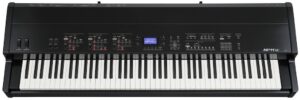 In fact, for people who own full size acoustic grand pianos and want a digital piano that gives them a great piano playing experience and can do it privately using headphones, the MP11SE tends to be very popular with that crowd who don’t need internal speakers. I have had number of people (both advanced pianists and recreational players) order this model for those very reasons. Also, since the MP11SE is only $3599 then its price is very affordable for many people looking for a high quality digital piano in a more portable form with a relatively small footprint. But you would need a stand and external speakers system to use it correctly.
In fact, for people who own full size acoustic grand pianos and want a digital piano that gives them a great piano playing experience and can do it privately using headphones, the MP11SE tends to be very popular with that crowd who don’t need internal speakers. I have had number of people (both advanced pianists and recreational players) order this model for those very reasons. Also, since the MP11SE is only $3599 then its price is very affordable for many people looking for a high quality digital piano in a more portable form with a relatively small footprint. But you would need a stand and external speakers system to use it correctly.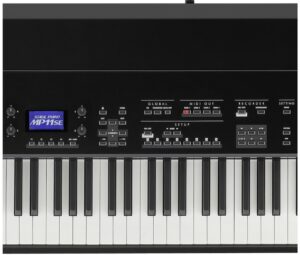 The MP11SE has no built-in speakers and is considered a “stage digital piano” because of that reason. But it is otherwise completely self contained with its own sounds, controls, and easy to use features. All you would need to do is to connect a pair of smaller high quality powered monitors to it for a regular size room in a home or smaller studio.
The MP11SE has no built-in speakers and is considered a “stage digital piano” because of that reason. But it is otherwise completely self contained with its own sounds, controls, and easy to use features. All you would need to do is to connect a pair of smaller high quality powered monitors to it for a regular size room in a home or smaller studio.Depending on the room size you are trying to fill with sound, good stereo monitors may only cost you and extra approx $300 to $400 or so. Those powered monitors make the MP11SE piano sound as good if not better than some furniture cabinet pianos that cost more money than the MP11SE. If you are playing the MP11SE in a very big room, venue, and large space in general, then a larger and more powerful external sound system would likely be necessary. The MP11SE is a bit heavy at approx 75 lbs and somewhat bulky, so it is not easy to carry or move by yourself if you should need to do that. But it is lighter than a real acoustic grand piano!
KAWAI FURNITURE CABINET DIGITAL PIANOS
CN201, CN301, CA401, CA501
$2000 to $4000
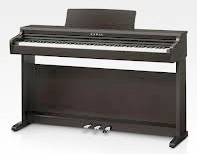 Next in line of the Kawai US digital pianos are 3 home furniture cabinet models under $2000 which can be purchased on the internet or local stores and they include the starter models KDP75 ($999 price), KDP120 ($1549 internet discount price), and the upgraded CN201 at $2349. The KDP120 is much better and more realistic as a piano than the entry level KDP75 is, so we definitely recommend the KDP120 over the KDP75, if your budget will allow it. Although the KDP-120 home cabinet digital piano is somewhat basic with regard to functions & features, it still has a very nice weighted piano style key action along with good stereo piano sound and responsive pedaling. The internal speaker system is 40 watts total going through 2 speakers. If you want more info on the KDP120 you can read my detailed review of that model at the following link: Kawai KDP120 Review
Next in line of the Kawai US digital pianos are 3 home furniture cabinet models under $2000 which can be purchased on the internet or local stores and they include the starter models KDP75 ($999 price), KDP120 ($1549 internet discount price), and the upgraded CN201 at $2349. The KDP120 is much better and more realistic as a piano than the entry level KDP75 is, so we definitely recommend the KDP120 over the KDP75, if your budget will allow it. Although the KDP-120 home cabinet digital piano is somewhat basic with regard to functions & features, it still has a very nice weighted piano style key action along with good stereo piano sound and responsive pedaling. The internal speaker system is 40 watts total going through 2 speakers. If you want more info on the KDP120 you can read my detailed review of that model at the following link: Kawai KDP120 Review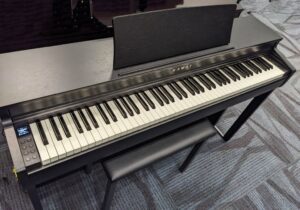 The newer Kawai CN201 is an impressive upgraded model at its $2349 price for a more traditional furniture cabinet piano. If you can be in this price range then we recommend this more natural sounding and playing digital piano over most of the other brands right now, especially with its very attractive more traditional furniture style cabinet. With a more natural and realistic piano playing experience as compared to most of the other traditional furniture cabinet digital pianos under $2500, this model really “shines.” With its useful digital features, OLED user interface, and built-in piano educational components, the CN201 will impress you. Please read my recent detailed review of the the CN201 at the following link: Kawai CN201 Review
The newer Kawai CN201 is an impressive upgraded model at its $2349 price for a more traditional furniture cabinet piano. If you can be in this price range then we recommend this more natural sounding and playing digital piano over most of the other brands right now, especially with its very attractive more traditional furniture style cabinet. With a more natural and realistic piano playing experience as compared to most of the other traditional furniture cabinet digital pianos under $2500, this model really “shines.” With its useful digital features, OLED user interface, and built-in piano educational components, the CN201 will impress you. Please read my recent detailed review of the the CN201 at the following link: Kawai CN201 Review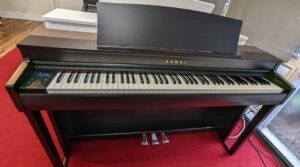 Kawai also has another “CN model called the CN301 at $3199 internet price. It has the same impressive key action and piano sound engine (piano samples) as the CN201. However, the newer CN301 has a noticeably upgraded internal speaker system, an upgraded user interface control panel, and many more “bells & whistles” including more recording and playback capabilities as compared to the lower priced CN201.
Kawai also has another “CN model called the CN301 at $3199 internet price. It has the same impressive key action and piano sound engine (piano samples) as the CN201. However, the newer CN301 has a noticeably upgraded internal speaker system, an upgraded user interface control panel, and many more “bells & whistles” including more recording and playback capabilities as compared to the lower priced CN201.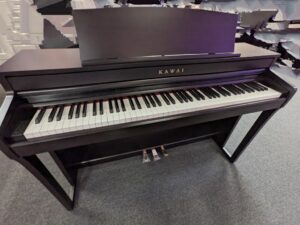 Next up is the impressive Kawai “Concert Artist” series which is known for its sophisticated “grand piano” style 100% wooden keys with extra length keys for more accurate “grand” key action response. The Concert Artist pianos include 4 newer models with the CA401 at $3199, the CA501 at $4099, the CA701 at $5049 price, and CA901 at $6549 price. These models are available in attractive satin black, satin rosewood, and satin white cabinets. The CA701 and CA901 are also available in a premium polished ebony finish which is quite a bit higher in price at about $700 to $800 more, but they are beautiful.
Next up is the impressive Kawai “Concert Artist” series which is known for its sophisticated “grand piano” style 100% wooden keys with extra length keys for more accurate “grand” key action response. The Concert Artist pianos include 4 newer models with the CA401 at $3199, the CA501 at $4099, the CA701 at $5049 price, and CA901 at $6549 price. These models are available in attractive satin black, satin rosewood, and satin white cabinets. The CA701 and CA901 are also available in a premium polished ebony finish which is quite a bit higher in price at about $700 to $800 more, but they are beautiful.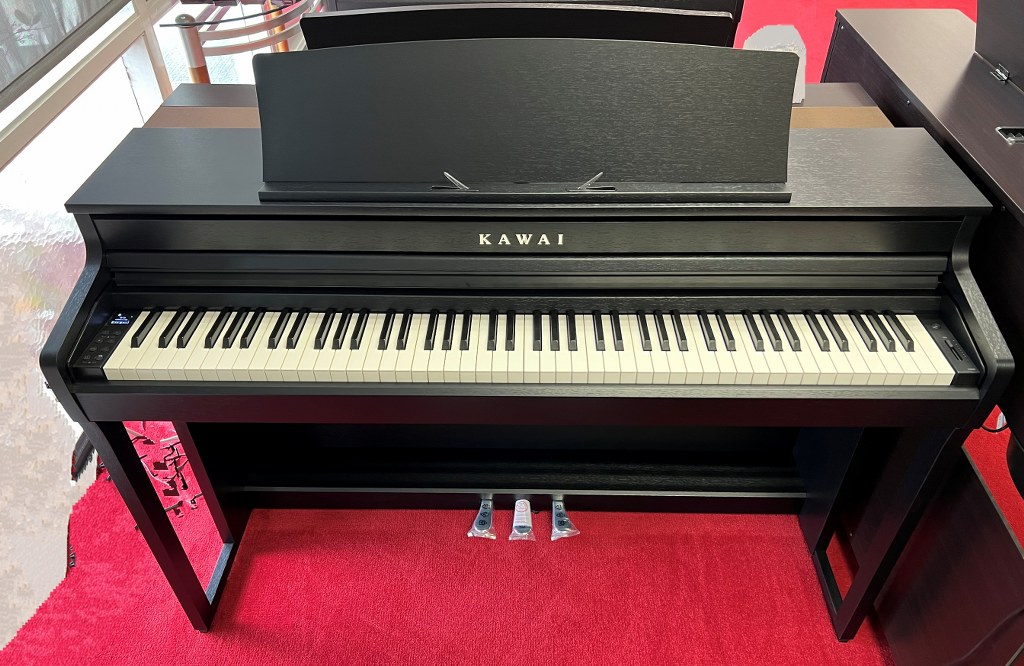
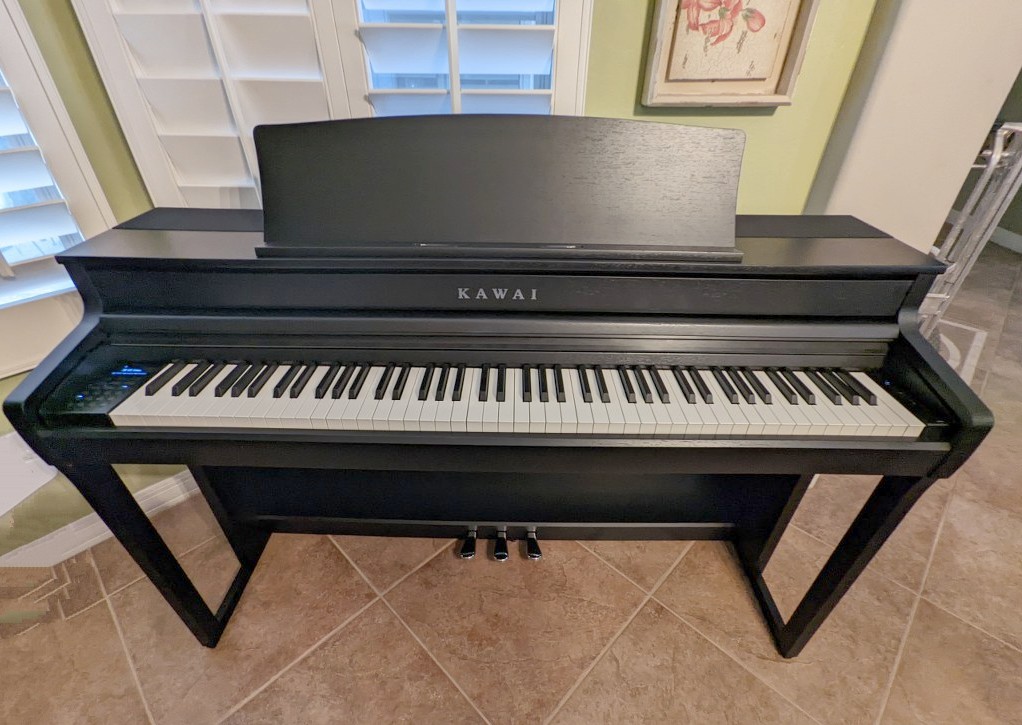
CONCERT ARTIST CA701 & CA901
$5000 to $6500+
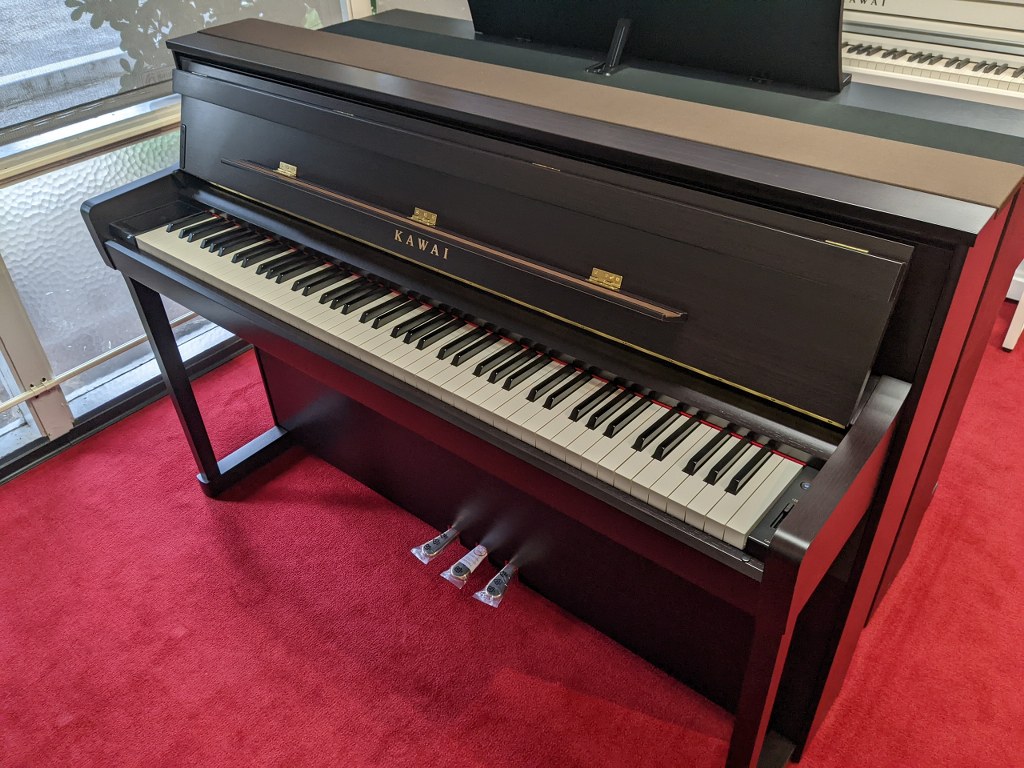
The newer Concert Artist CA701 & CA901 furniture cabinet models have not been out that long and have been upgraded from the previous models including new and more functional cabinet designs and construction, upgraded internal speaker system, new piano sound engines, updated key actions, and other impressive upgrades. Kawai still has their very popular and more realistic “wood key actions” in these 2 Concert series models called Grand-Feel III. This key action moves smoothly, is more refined, is mechanically quieter, and really give you a sense that you’re playing a grand piano with its even longer extended all-wood keys.
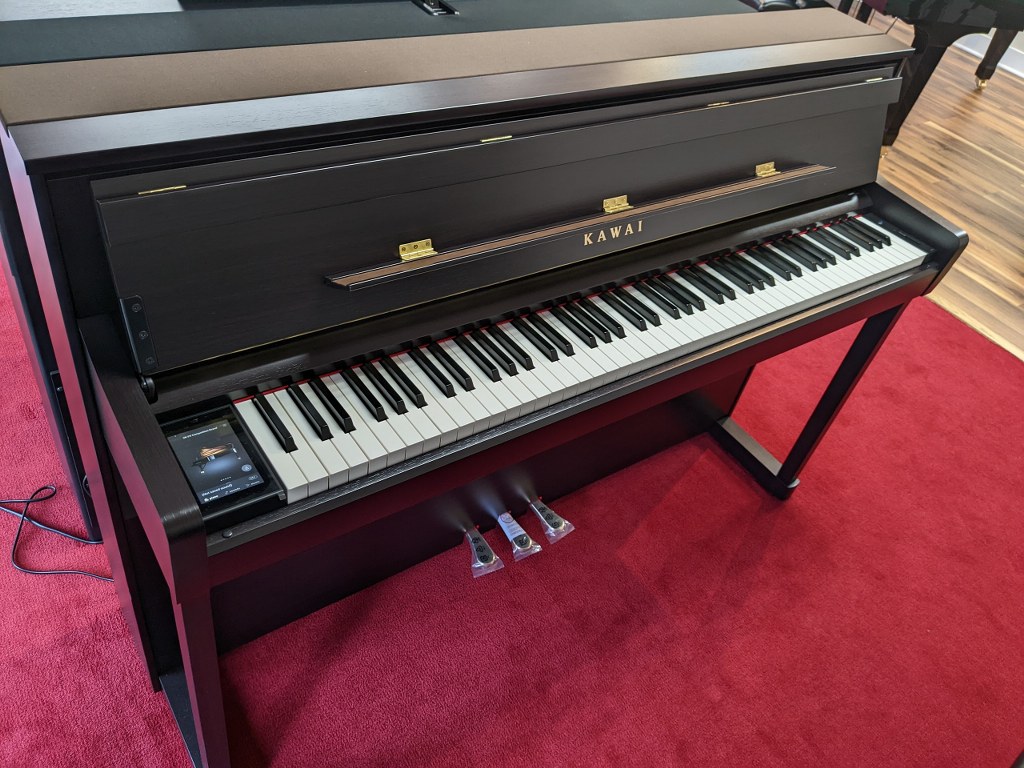
Discount pricing for the CA701 is $5049 for the matte rosewood, black, and white cabinet finishes, and $800 more for the polished ebony version. The CA901 is $6549 for the matte rosewood finish, satin black, or satin white finish, and $800 more for the polished ebony finish at $7499. The newer CA701 and CA901 key action and piano sound engine are arguably the best there is in their respective price ranges,, although the Casio Grand Hybrid models (GP-310 & GP-510) definitely give the Kawai models a “run for the money” with regard to key action movement and response.
Another question that people have concerning the CA701 is, does the CA701 offer a noticeably more realistic piano playing experience as compared to the CA501? The answer would be yes! I have played both models, and like me, if you have some good experience playing real high quality acoustic grand pianos then there is a noticeable difference between the CA701 vs the CA501 with regard to getting much closer to the piano playing experience of a real high quality grand piano. The keys are longer and more balanced on the CA701, the stereo grand piano sounds are more natural, the internal speaker system puts out the piano sound more naturally, and even the sustain-decay time for the damper pedal is more natural.
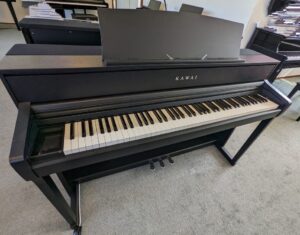
Of course there are more digital features on the CA701 as compared to the CA501. But it’s the more natural piano key action and piano sound that does give the CA701 a noticeable edge over the CA501 and that’s why the CA701 is $900 more. Is it worth the extra investment? Yes, it is…but only if you can come up with the extra money. But if you are looking at this as a “long term” purchase to keep for many years and you want to play piano at the highest possible level in this price range, then I would recommend to go for it and get the CA701 if you can. Otherwise the CA501 is an excellent choice and also a very good long term purchase.
The CA901 is the upgraded version of the CA701, but those 2 models share the same key action, same piano sound engine, and the same digital features, although the cabinet and sound system do differ between the CA701 and CA901.
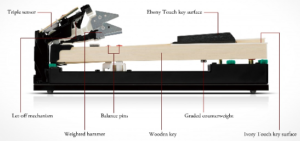 The static down-weight measurement of the nearly 14″ long wooden white keys on middle C in this Grand Feel 3 key action (for both the CA701 and CA901) is about 54 grams which is just like a real grand piano in terms of comfortable finger force applied to pressing down the key along with a quick (but not hard) up-weight response. So the action for both the black & white “all wooden” keys feels great, plays like “butter” without creating hand, finger, and wrist fatigue, but yet is expressive with excellent weight distribution from the front of the keys to the backs of the keys. This was my personal playing experience on this new Grand-Feel 3 key action and I was impressed.
The static down-weight measurement of the nearly 14″ long wooden white keys on middle C in this Grand Feel 3 key action (for both the CA701 and CA901) is about 54 grams which is just like a real grand piano in terms of comfortable finger force applied to pressing down the key along with a quick (but not hard) up-weight response. So the action for both the black & white “all wooden” keys feels great, plays like “butter” without creating hand, finger, and wrist fatigue, but yet is expressive with excellent weight distribution from the front of the keys to the backs of the keys. This was my personal playing experience on this new Grand-Feel 3 key action and I was impressed.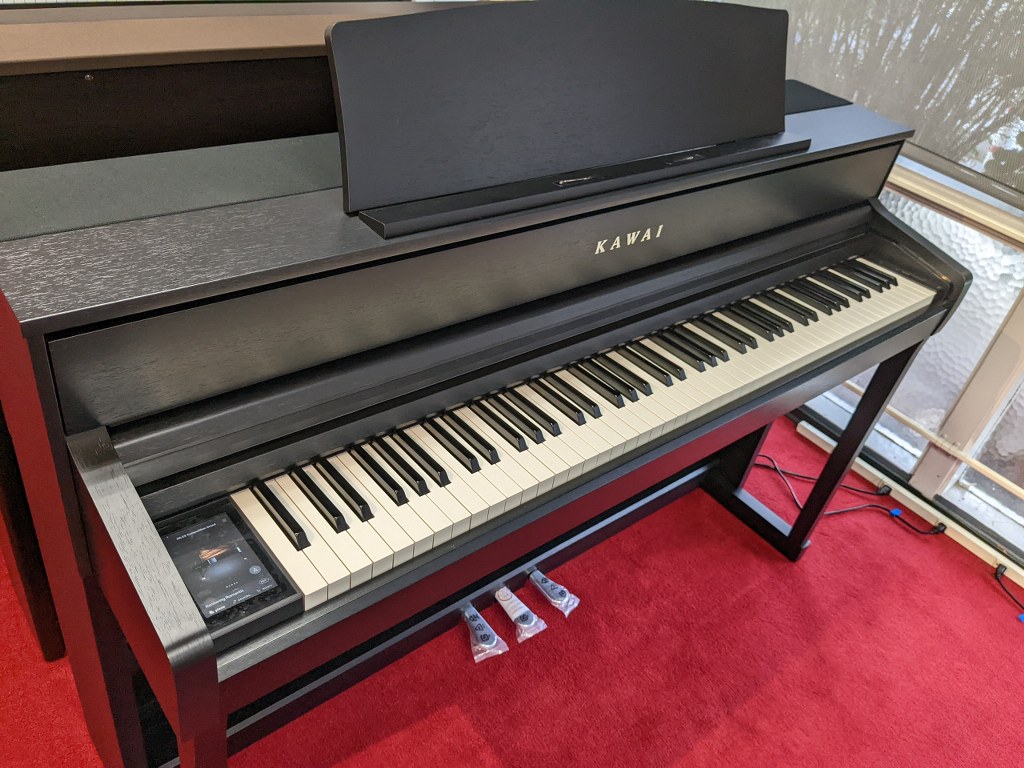
The upgraded piano sound engine in these 2 newer models is using a combination of the latest physical modeling technology and sampling technology combined. This type of piano sound technology gives a very immersive authentic sounding piano playing experience, even to the most demanding players based on my playing experience with both the CA701 and CA901. Utilizing an all new and improved Kawai internal speaker and amplifier audio system with better sound dispersion, these 2 new models have impressive internal sound systems that are difficult to beat.
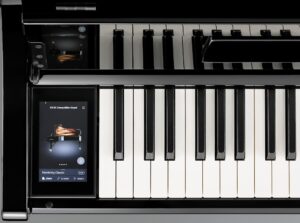 I have already played these 2 new pianos extensively, and unless you are very picky, you will have a difficult time trying to get off the bench and stop playing…these new models are that good. There is a redesigned color touch display screen for both of those models for easier navigation to access the many features in these models including new Bluetooth audio streaming. The amount, variety, and authenticity of the stereo acoustic piano sounds in this model are outstanding and no other brand comes close in that way. The digital features and functions are impressive and the user interface is fairly intuitive with its color touchscreen, which no one else has.
I have already played these 2 new pianos extensively, and unless you are very picky, you will have a difficult time trying to get off the bench and stop playing…these new models are that good. There is a redesigned color touch display screen for both of those models for easier navigation to access the many features in these models including new Bluetooth audio streaming. The amount, variety, and authenticity of the stereo acoustic piano sounds in this model are outstanding and no other brand comes close in that way. The digital features and functions are impressive and the user interface is fairly intuitive with its color touchscreen, which no one else has.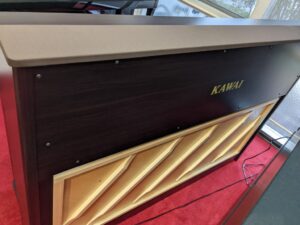
The CA901 has an all “wooden soundboard” in the back of the piano to further enhance the piano sound. It adds “organic resonation” to the piano sound with transducer microphones attached to that soundboard. The resulting additional piano sound vibrations makes the CA90 more authentic than the CA701 without that soundboard. No other top name digital piano brand or model has this type of “organic piano sound vibrations” coming from a wooden soundboard that regular acoustic pianos would have. This really gives the CA901 a more “hybrid” nature to it. That’s one of the reasons the CA901 costs quite a bit more money than the CA701.
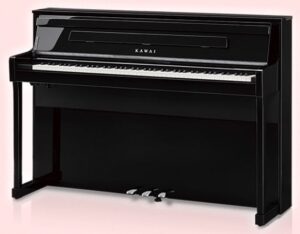 Those polished ebony finishes on the new top Concert series models CA701 and CA901 are beautiful and elegant and they are worth the extra cost, assuming you want that “look” in your home. You would need to decide if that is worth it to you or would prefer to save a some money and look at the Concert Artist series in the regular satin finishes which are very attractive and come in at a lower price.
Those polished ebony finishes on the new top Concert series models CA701 and CA901 are beautiful and elegant and they are worth the extra cost, assuming you want that “look” in your home. You would need to decide if that is worth it to you or would prefer to save a some money and look at the Concert Artist series in the regular satin finishes which are very attractive and come in at a lower price.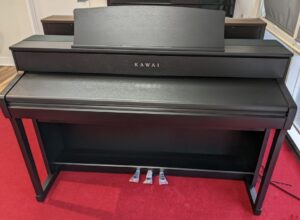 Also, I have played all the latest Roland digital pianos and they don’t come close in piano sound realism to the new Kawai models, and in fact the piano sound is unfortunately noticeably artificial to me when playing any of the latest Roland digital pianos. The ones that do offer Kawai some “piano” competition in this price range would be the Casio Grand Hybrid models when it comes to just the piano key action playing experience, although the Kawai digital features are far more upgraded and extensive as compared to Casio.
Also, I have played all the latest Roland digital pianos and they don’t come close in piano sound realism to the new Kawai models, and in fact the piano sound is unfortunately noticeably artificial to me when playing any of the latest Roland digital pianos. The ones that do offer Kawai some “piano” competition in this price range would be the Casio Grand Hybrid models when it comes to just the piano key action playing experience, although the Kawai digital features are far more upgraded and extensive as compared to Casio.KAWAI NOVUS NV5S & NV10S
$9500 to $14,500
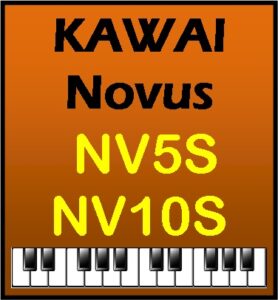 With regard to Kawai’s “wooden key” key action models, Kawai also has 2 top of the line fully hybrid “wooden key” key action models called the NOVUS series.These 2 pianos include the NV5S which is selling in Kawai piano stores at about $9500 and the NV10S which is selling at about $14,500. Essentially these 2 Novus models are very similar to the Kawai Concert CA701 and 901 as far as the digital sound and function technology goes. The color touch screen user interface is also similar in the Novus pianos to the CA701 and CA901 as well as most of the “bells & whistles” are the same. Some (but not all) aspects of the internal speaker systems are the same in the Novus pianos as compared to the Concert CA901. So there are a lot of similarities.
With regard to Kawai’s “wooden key” key action models, Kawai also has 2 top of the line fully hybrid “wooden key” key action models called the NOVUS series.These 2 pianos include the NV5S which is selling in Kawai piano stores at about $9500 and the NV10S which is selling at about $14,500. Essentially these 2 Novus models are very similar to the Kawai Concert CA701 and 901 as far as the digital sound and function technology goes. The color touch screen user interface is also similar in the Novus pianos to the CA701 and CA901 as well as most of the “bells & whistles” are the same. Some (but not all) aspects of the internal speaker systems are the same in the Novus pianos as compared to the Concert CA901. So there are a lot of similarities.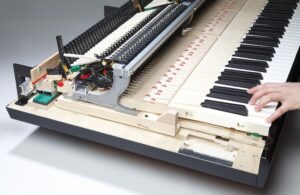 But for people who want the most “life-like” piano playing experience with regard to key action, pedaling, and internal speaker system in a Kawai digital piano, then the Novus NV5S upright key action model and NV10S grand key action model would be more advanced and more authentic in that way as compared to the CA Concert series. But…they are also quite a bit more money. However, in my opinion, if you have the disposable income to make that kind of a purchase then these 2 models are definitely worth it.
But for people who want the most “life-like” piano playing experience with regard to key action, pedaling, and internal speaker system in a Kawai digital piano, then the Novus NV5S upright key action model and NV10S grand key action model would be more advanced and more authentic in that way as compared to the CA Concert series. But…they are also quite a bit more money. However, in my opinion, if you have the disposable income to make that kind of a purchase then these 2 models are definitely worth it.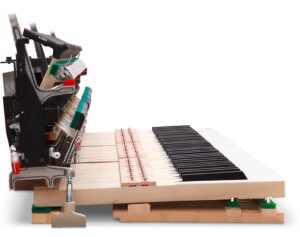 However, the “star of the show” on the Novus pianos that is a huge upgrade over the Concert series is the fully hybrid all-wood “longer key” key action and pedal system taken directly out of a top Kawai grand and upright acoustic piano. In the 2 top CA Concert models CA701 and CA901, all of the keys (both black & white) are actual 100% spruce wood and those white keys are longer than in the lower price CA401 and CA501. So the CA701 and CA901 have a distinct advantage over those 2 lower CA models in that way. The Novus key actions are on a much higher level of playability and authenticity with regard to the keys, the organic action parts, the hammers, the key/hammer sensors, the pedals, and even the internal speaker systems. That’s a big reason the Novus digital pianos cost quite a bit more money than the Concert Artist series.
However, the “star of the show” on the Novus pianos that is a huge upgrade over the Concert series is the fully hybrid all-wood “longer key” key action and pedal system taken directly out of a top Kawai grand and upright acoustic piano. In the 2 top CA Concert models CA701 and CA901, all of the keys (both black & white) are actual 100% spruce wood and those white keys are longer than in the lower price CA401 and CA501. So the CA701 and CA901 have a distinct advantage over those 2 lower CA models in that way. The Novus key actions are on a much higher level of playability and authenticity with regard to the keys, the organic action parts, the hammers, the key/hammer sensors, the pedals, and even the internal speaker systems. That’s a big reason the Novus digital pianos cost quite a bit more money than the Concert Artist series.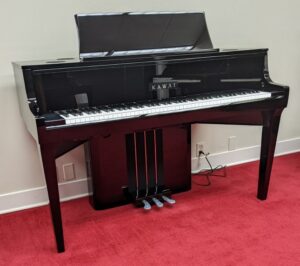 In the Novus hybrid digital pianos, the 100% wood physical key actions and connecting parts are actually taken from the real Kawai acoustic pianos. This means all of the key action parts that are in the Novus pianos are in real acoustic pianos, with the exception of the felt hammers & strings in acoustic pianos which are not needed in digital pianos. These real key actions not only include extra long acoustic wooden piano keys that are found in acoustic pianos, but it includes all of the other hundreds of organic key action parts that acoustic pianos have inside of them, with the exception of the felt hammers and strings as I already mentioned. Also, the pedal system is hybrid in the NV5S and NV10S and gives you a more accurate feel and movement of real acoustic piano pedals because of their pedal action rails.
In the Novus hybrid digital pianos, the 100% wood physical key actions and connecting parts are actually taken from the real Kawai acoustic pianos. This means all of the key action parts that are in the Novus pianos are in real acoustic pianos, with the exception of the felt hammers & strings in acoustic pianos which are not needed in digital pianos. These real key actions not only include extra long acoustic wooden piano keys that are found in acoustic pianos, but it includes all of the other hundreds of organic key action parts that acoustic pianos have inside of them, with the exception of the felt hammers and strings as I already mentioned. Also, the pedal system is hybrid in the NV5S and NV10S and gives you a more accurate feel and movement of real acoustic piano pedals because of their pedal action rails.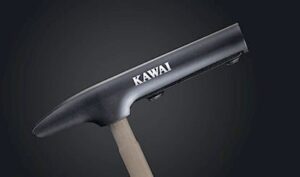 There are no organic felt hammers in digital pianos because there are no actual strings in digital pianos so you don’t need “real” felt hammers. There are no strings in digital pianos because the piano sound is produced digitally, having been taken and recorded from real Kawai pianos. Instead, there are special ABS hammers that recreate the weight and movement of real acoustic hammers along with “optical” sensors that trigger the piano sound in the Novus pianos based on key action velocity, speed, movement, etc, That information is sent to the digital piano sound engine (sound chip) to produce the type of piano sound that you want from within the digital sound engine.
There are no organic felt hammers in digital pianos because there are no actual strings in digital pianos so you don’t need “real” felt hammers. There are no strings in digital pianos because the piano sound is produced digitally, having been taken and recorded from real Kawai pianos. Instead, there are special ABS hammers that recreate the weight and movement of real acoustic hammers along with “optical” sensors that trigger the piano sound in the Novus pianos based on key action velocity, speed, movement, etc, That information is sent to the digital piano sound engine (sound chip) to produce the type of piano sound that you want from within the digital sound engine.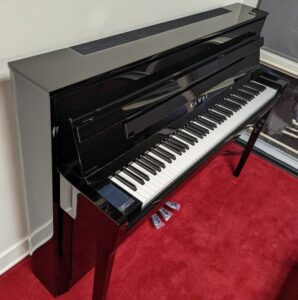 When playing the NV5S or NV10S in my opinion you get a smooth “buttery” key action response that is exactly like a real high-end acoustic upright or grand piano, as I have previously mentioned. The key actions are identical to the Kawai acoustic pianos with the exception of metal rods replacing the felt hammers so the piano sound responds correctly to the “hammer movement” utilizing state-of-the-art optical sensors that are able to correctly sense the movement to all 88 keys and their motion with varying degrees of velocity.
When playing the NV5S or NV10S in my opinion you get a smooth “buttery” key action response that is exactly like a real high-end acoustic upright or grand piano, as I have previously mentioned. The key actions are identical to the Kawai acoustic pianos with the exception of metal rods replacing the felt hammers so the piano sound responds correctly to the “hammer movement” utilizing state-of-the-art optical sensors that are able to correctly sense the movement to all 88 keys and their motion with varying degrees of velocity.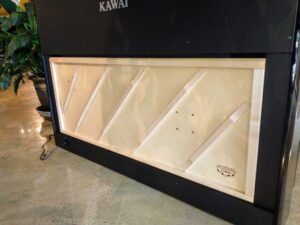 Also, the NV5S has the Kawai acoustic soundboard speaker system using a smaller acoustic soundboard in the back of the piano. The transducer microphones capture the natural vibrations of that wood soundboard and then that sound is transmitted through the speaker system. This wood soundboard, which is only available in the CA901 and NV5S, simply adds to the piano sound realism in a way that other brands and models don’t do. The “soundboard” system is an exclusive feature for the Kawai company and no other brand has it.
Also, the NV5S has the Kawai acoustic soundboard speaker system using a smaller acoustic soundboard in the back of the piano. The transducer microphones capture the natural vibrations of that wood soundboard and then that sound is transmitted through the speaker system. This wood soundboard, which is only available in the CA901 and NV5S, simply adds to the piano sound realism in a way that other brands and models don’t do. The “soundboard” system is an exclusive feature for the Kawai company and no other brand has it.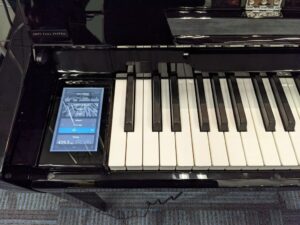 Unlike an acoustic piano which just has one piano sound (whatever that is), a good digital piano can give you a variety of acoustic piano recorded sounds. This might include from mellow to bright, from smaller to larger, from more delicate to more of a concert sound, etc. In the Novus pianos there are over 20 different acoustic piano sounds to choose from which allows you to play and produce literally any kind of piano music playing all types of piano pieces.
Unlike an acoustic piano which just has one piano sound (whatever that is), a good digital piano can give you a variety of acoustic piano recorded sounds. This might include from mellow to bright, from smaller to larger, from more delicate to more of a concert sound, etc. In the Novus pianos there are over 20 different acoustic piano sounds to choose from which allows you to play and produce literally any kind of piano music playing all types of piano pieces.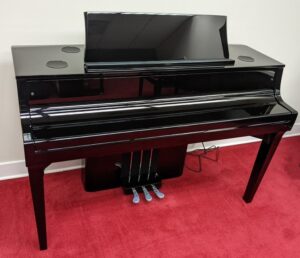 So when you purchase a Novus NV10S you are essentially getting a real grand piano, and the NV5S will give you a real upright piano playing experience, and both will give you all the great benefits of digital piano technology such as no tuning ever needed, control over volume, recording, headphone private practice, Bluetooth wireless streaming, and much more. In other words, in these higher price Novus fully hybrid digital pianos, you get a real upright or grand piano playing experience with all the benefits of Kawai digital piano technology and you’ll never need to tune those hybrid digital pianos either! I love to play acoustic grand pianos such as Steinway, Bosendorfer, Kawai, and Yamaha. But these Kawai digital pianos are very impressive to me and I really enjoy playing them and I believe you will too. Plus they are a lot less money than new acoustic pianos.
So when you purchase a Novus NV10S you are essentially getting a real grand piano, and the NV5S will give you a real upright piano playing experience, and both will give you all the great benefits of digital piano technology such as no tuning ever needed, control over volume, recording, headphone private practice, Bluetooth wireless streaming, and much more. In other words, in these higher price Novus fully hybrid digital pianos, you get a real upright or grand piano playing experience with all the benefits of Kawai digital piano technology and you’ll never need to tune those hybrid digital pianos either! I love to play acoustic grand pianos such as Steinway, Bosendorfer, Kawai, and Yamaha. But these Kawai digital pianos are very impressive to me and I really enjoy playing them and I believe you will too. Plus they are a lot less money than new acoustic pianos.KAWAI DG30 MINI DIGITAL GRAND PIANO
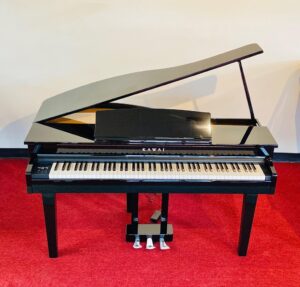 Kawai also produces a newer digital “mini grand piano” model called the DG30 which sells for $6499. This newer mini digital grand piano is very attractive in its smaller cabinet and fits into most spaces in the home or building. It looks great, sounds great, and the key action in this model is their best one within their all-plastic key action models. I have played it many times and it’s impressive for its smaller size.
Kawai also produces a newer digital “mini grand piano” model called the DG30 which sells for $6499. This newer mini digital grand piano is very attractive in its smaller cabinet and fits into most spaces in the home or building. It looks great, sounds great, and the key action in this model is their best one within their all-plastic key action models. I have played it many times and it’s impressive for its smaller size.The DG30 mini piano itself is relatively light at just 174 lbs and it not only sounds like a piano but has an enjoyable key action to play and is very responsive and balanced. This model also has quite a few impressive functions & features and comes in a polished ebony high gloss cabinet. If you like the appearance of a mini grand piano, you should definitely consider the DG30. It’s by far one of the more natural playing digital mini-grands of the few out there that are offered, however it is a bit pricey…but worth it. For more detailed info on the DG30, please read my detailed review at the following link: Kawai DG30 Review
PIANO SOUND & POLYPHONY
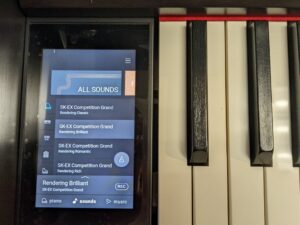 Most piano digital manufacturers have different piano sound chips (aka: sound engines) depending on the price of the piano. As you go up in price, the quality and authenticity of the piano sound (generally speaking) gets more realistic.The Kawai piano company has 4 different piano sound engines for their digital piano line. The way I categorize them is “good,” “better,” and “best,” and then the fourth one which is at the top I refer to as “best plus.” All of the piano sound engines are actually quite enjoyable to hear, but as you go up the piano sound engine ladder you get a higher degree of authenticity, and for more discerning players that extra realism translates to more sonic expression and enjoyment so that your piano playing experience can be even more satisfying.
Most piano digital manufacturers have different piano sound chips (aka: sound engines) depending on the price of the piano. As you go up in price, the quality and authenticity of the piano sound (generally speaking) gets more realistic.The Kawai piano company has 4 different piano sound engines for their digital piano line. The way I categorize them is “good,” “better,” and “best,” and then the fourth one which is at the top I refer to as “best plus.” All of the piano sound engines are actually quite enjoyable to hear, but as you go up the piano sound engine ladder you get a higher degree of authenticity, and for more discerning players that extra realism translates to more sonic expression and enjoyment so that your piano playing experience can be even more satisfying.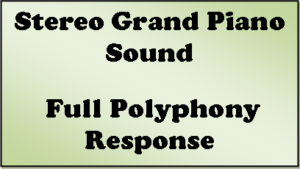 In terms of piano processing power, otherwise known as polyphony, Kawai offers either 192-note maximum polyphony or 256-note polyphony in their digital pianos. This is generally plenty of polyphony piano processing power to handle even the most sophisticated piano music without hearing notes abruptly drop out or any other issues with the piano sound. When it comes to piano polyphony processing power, all of the new Kawai digital pianos do a very good job in that way.
In terms of piano processing power, otherwise known as polyphony, Kawai offers either 192-note maximum polyphony or 256-note polyphony in their digital pianos. This is generally plenty of polyphony piano processing power to handle even the most sophisticated piano music without hearing notes abruptly drop out or any other issues with the piano sound. When it comes to piano polyphony processing power, all of the new Kawai digital pianos do a very good job in that way.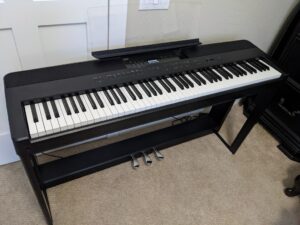 My favorite piano sound engine in the Kawai piano line at $4100 or less which reproduces the most authentic stereo acoustic piano sound, is found in their CA501 and their lower priced compact ES920 portable digital piano for just $1949 with the optional furniture stand and triple pedal at extra cost. The ES920 is the lowest priced self-contained digital piano which offers this more authentic piano sound reproduction. I have done a review of that model so if you want more info on it please read my review at the following link: Kawai ES920 Review
My favorite piano sound engine in the Kawai piano line at $4100 or less which reproduces the most authentic stereo acoustic piano sound, is found in their CA501 and their lower priced compact ES920 portable digital piano for just $1949 with the optional furniture stand and triple pedal at extra cost. The ES920 is the lowest priced self-contained digital piano which offers this more authentic piano sound reproduction. I have done a review of that model so if you want more info on it please read my review at the following link: Kawai ES920 Review
PIANO KEY ACTIONS
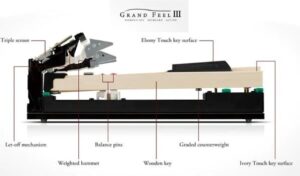 For those people concerned with having good key action in their piano, Kawai currently offers 7 key actions (which is a lot) in their digital pianos including their newest and best which is an actual acoustic grand piano key action built into their new hybrid digital grand piano called Novus (NV10S). The Novus grand piano key action is called the Millennium III and is taken out of a top Kawai acoustic grand piano so that when you play the Novus the key action will be the same as a fine Kawai acoustic grand piano that would sell for $20,000 or more. This is because the Novus key action is a fully acoustic grand key action movement (minus the felt hammers) whereas all the other Kawai digital piano key actions are specifically made for digital pianos only and lack most of the actual parts of a real acoustic piano key action.
For those people concerned with having good key action in their piano, Kawai currently offers 7 key actions (which is a lot) in their digital pianos including their newest and best which is an actual acoustic grand piano key action built into their new hybrid digital grand piano called Novus (NV10S). The Novus grand piano key action is called the Millennium III and is taken out of a top Kawai acoustic grand piano so that when you play the Novus the key action will be the same as a fine Kawai acoustic grand piano that would sell for $20,000 or more. This is because the Novus key action is a fully acoustic grand key action movement (minus the felt hammers) whereas all the other Kawai digital piano key actions are specifically made for digital pianos only and lack most of the actual parts of a real acoustic piano key action.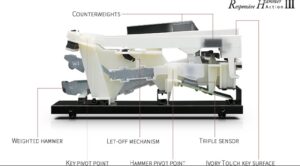 Kawai has 3 different all-plastic key actions and 6 different more advanced wood key actions. In my opinion, all of the key actions in the Kawai digital pianos are satisfying to play. But it depends on your budget and what’s best for your skill level and musical goals. Generally speaking, the more money you pay for a digital piano the better and more natural the key action gets and the more realistic the piano sound will be. This is not always the case, but normally this is what you can expect.
Kawai has 3 different all-plastic key actions and 6 different more advanced wood key actions. In my opinion, all of the key actions in the Kawai digital pianos are satisfying to play. But it depends on your budget and what’s best for your skill level and musical goals. Generally speaking, the more money you pay for a digital piano the better and more natural the key action gets and the more realistic the piano sound will be. This is not always the case, but normally this is what you can expect.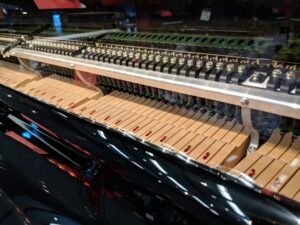 Some of the digital piano models from a few different name brands are not nearly as good or natural as some of these Kawai models that sell for less money. Ultimately when it comes to key action and the way the keys feel and move…the “key” to picking out the right one for you should be based on your playing skill level, previous experience playing acoustic pianos, type of music you want to primarily play, your expectations and desires for the way the key action actually responds and moves, and your budget.
Some of the digital piano models from a few different name brands are not nearly as good or natural as some of these Kawai models that sell for less money. Ultimately when it comes to key action and the way the keys feel and move…the “key” to picking out the right one for you should be based on your playing skill level, previous experience playing acoustic pianos, type of music you want to primarily play, your expectations and desires for the way the key action actually responds and moves, and your budget.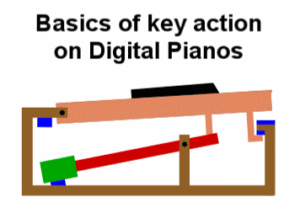 You need to do it right and make sure you can grow into the piano you choose instead of grow out of it. You don’t want to later on find out it is not responding correctly to your playing after you have made the purchase. It’s like buying a car…you want to be sure you get a smooth transmission and a smooth engine performance or else you’ll likely be sorry you bought that vehicle. It’s the same with a digital piano. Just because it looks good on the outside and has black & white keys does not automatically make it a piano that offers a good piano playing experience.
You need to do it right and make sure you can grow into the piano you choose instead of grow out of it. You don’t want to later on find out it is not responding correctly to your playing after you have made the purchase. It’s like buying a car…you want to be sure you get a smooth transmission and a smooth engine performance or else you’ll likely be sorry you bought that vehicle. It’s the same with a digital piano. Just because it looks good on the outside and has black & white keys does not automatically make it a piano that offers a good piano playing experience.That’s one big thing I admire about the Kawai piano company…all of their piano models are impressive in their price ranges and I enjoying playing them. It’s just a matter of which one is right for you.
PEDALING
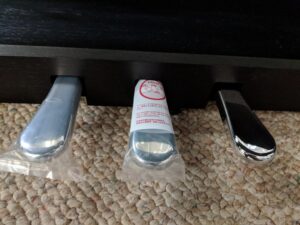 Pedaling with the triple pedal system on Kawai pianos also varies depending on which model you choose.The primary pedal, called the damper-sustain pedal, can be lighter or firmer to press down depending on the model you choose. The sustain/decay time of the piano sound can be longer or shorter depending on the piano your choose. So even in the pedal mechanism, there can be a difference among different Kawai models with some being more responsive than others, and that is true as you go up the line which is like some other brands of digital pianos.
Pedaling with the triple pedal system on Kawai pianos also varies depending on which model you choose.The primary pedal, called the damper-sustain pedal, can be lighter or firmer to press down depending on the model you choose. The sustain/decay time of the piano sound can be longer or shorter depending on the piano your choose. So even in the pedal mechanism, there can be a difference among different Kawai models with some being more responsive than others, and that is true as you go up the line which is like some other brands of digital pianos.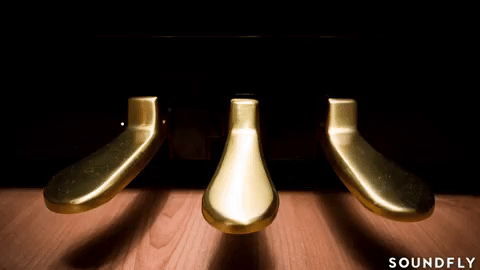 All Kawai models offer half-damper pedaling control with variable pedal sustain decay to come out closer to what a real acoustic piano sustain pedal offers. The color and finish of the pedals can also be different depending on the model, with some pedals coming in a chrome plated finish and others in a golden brass. That kind of thing just boils down to appearance and whether you really prefer one over the other just as in cabinet colors and finishes.
All Kawai models offer half-damper pedaling control with variable pedal sustain decay to come out closer to what a real acoustic piano sustain pedal offers. The color and finish of the pedals can also be different depending on the model, with some pedals coming in a chrome plated finish and others in a golden brass. That kind of thing just boils down to appearance and whether you really prefer one over the other just as in cabinet colors and finishes.EXTRA “BELLS & WHISTLES”
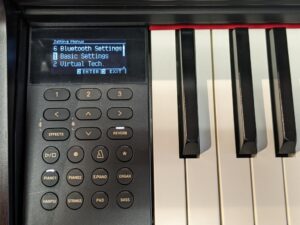 Some Kawai digital pianos like the ES120, CN201, and KDP120 with all three under $2000 focus mostly on piano playing with only a few extra “bells & whistles” while other models such as the CN301, ES920, CA501, CA701, CA901, DG30, NV5S, and NV10S have quite a few more “bells & whistles,” but still overall primarily focus on the piano playing experience. Whether it’s wireless Bluetooth connectivity, MP3/wav file song recording, 50 or more instrument sounds, mult-itrack recording, color display screens, or interactive rhythm styles, the Kawai pianos cover a lot of ground, and depending on what you want to do with your music and with your time, you can probably find what you want within the lineup of new Kawai digital pianos.
Some Kawai digital pianos like the ES120, CN201, and KDP120 with all three under $2000 focus mostly on piano playing with only a few extra “bells & whistles” while other models such as the CN301, ES920, CA501, CA701, CA901, DG30, NV5S, and NV10S have quite a few more “bells & whistles,” but still overall primarily focus on the piano playing experience. Whether it’s wireless Bluetooth connectivity, MP3/wav file song recording, 50 or more instrument sounds, mult-itrack recording, color display screens, or interactive rhythm styles, the Kawai pianos cover a lot of ground, and depending on what you want to do with your music and with your time, you can probably find what you want within the lineup of new Kawai digital pianos.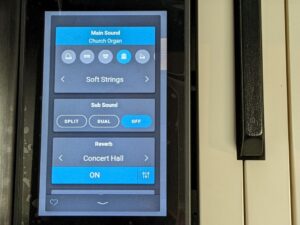 I have tried out these new color touch screens many times and they are really nice to use and the only digital pianos out of all brands to have this type of color user interface which is located on the left side of the keyboard. The much older CA models also had these color touch screens and now that interface has been upgraded and incorporated into the new Kawai CA701, CA901, NV5S, and NV10S, and the response is better. These 4 models have the same piano sound engine/chip technology, but with a couple of improvements, same user color touch screen interface, but more responsive, along with sharing most of the same functionality.
I have tried out these new color touch screens many times and they are really nice to use and the only digital pianos out of all brands to have this type of color user interface which is located on the left side of the keyboard. The much older CA models also had these color touch screens and now that interface has been upgraded and incorporated into the new Kawai CA701, CA901, NV5S, and NV10S, and the response is better. These 4 models have the same piano sound engine/chip technology, but with a couple of improvements, same user color touch screen interface, but more responsive, along with sharing most of the same functionality.The Kawai CA501 at $4099, which in my opinion is a very impressive model for that price and arguably superior in key action and piano sound authenticity as compared to Yamaha & Roland in this price range, has a button controlled user interface display screen like some of the Yamaha Clavinova digital pianos, but it is even more intuitive in the way it works.
IMPORTANT SHOPPING TIPS
 When it comes to shopping for digital pianos, especially Kawai digital pianos, my suggestion for deciding on what model will best fit your piano/music needs, is to decide how much the person playing the piano really likes music, how much they like being around music, would they like to use digital technology to enhance their musical playing experience, and if they (or you) would spend some time playing piano?
When it comes to shopping for digital pianos, especially Kawai digital pianos, my suggestion for deciding on what model will best fit your piano/music needs, is to decide how much the person playing the piano really likes music, how much they like being around music, would they like to use digital technology to enhance their musical playing experience, and if they (or you) would spend some time playing piano?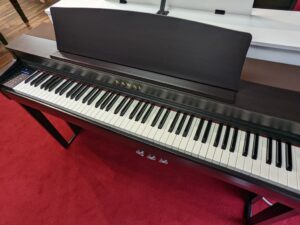 The two newer model CN models called the CN201 and CN301 (the CN” 01″ series) which recently came out have improvements over the previous CN models. These improvements would include the internal speaker systems that sound and work better and will be more reliable. The piano sound samples have been upgraded and sound more realistic. Also, the user interface control panel has been improved to be much more intuitive and responsive to using it than before with easier to read & understand OLED display screens replacing the older style technology.
The two newer model CN models called the CN201 and CN301 (the CN” 01″ series) which recently came out have improvements over the previous CN models. These improvements would include the internal speaker systems that sound and work better and will be more reliable. The piano sound samples have been upgraded and sound more realistic. Also, the user interface control panel has been improved to be much more intuitive and responsive to using it than before with easier to read & understand OLED display screens replacing the older style technology.FINAL THOUGHTS
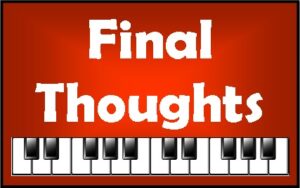 At the end of the day it is true that one digital piano company cannot cover all of the bases when it comes to musical needs and budget of the digital piano shopper.That’s why there are other top name digital piano manufacturers out there like Yamaha, Casio, Roland, Korg, and others who offer something different than Kawai which may or may not fit your needs better. There are also digital piano makers who produce very poor playing and sounding pianos that I do not recommend. Although they may look good on the outside, they are not necessarily good on the inside and can create a variety playing problems. I call that kind of a digital piano a “Piano Shaped Object” (aka: PSO) and I advise people to stay away from them if at all possible.
At the end of the day it is true that one digital piano company cannot cover all of the bases when it comes to musical needs and budget of the digital piano shopper.That’s why there are other top name digital piano manufacturers out there like Yamaha, Casio, Roland, Korg, and others who offer something different than Kawai which may or may not fit your needs better. There are also digital piano makers who produce very poor playing and sounding pianos that I do not recommend. Although they may look good on the outside, they are not necessarily good on the inside and can create a variety playing problems. I call that kind of a digital piano a “Piano Shaped Object” (aka: PSO) and I advise people to stay away from them if at all possible.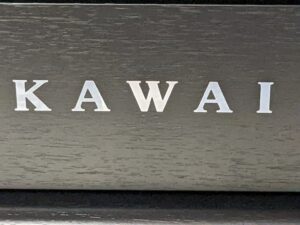 The Kawai piano brand is definitely worthy of your attention and it is certainly one of my favorites. They make great acoustic grand and upright pianos played by professionals and piano teachers around the world and their digital pianos use cutting edge piano technology to recreate a very impressive piano playing experience in just about every way possible…plus the cabinets look great too. If you want more info on Kawai pianos or even lower prices than Amazon, Internet, local store, etc, then please contact me before you buy anything from anyone…you’ll be glad you did!
The Kawai piano brand is definitely worthy of your attention and it is certainly one of my favorites. They make great acoustic grand and upright pianos played by professionals and piano teachers around the world and their digital pianos use cutting edge piano technology to recreate a very impressive piano playing experience in just about every way possible…plus the cabinets look great too. If you want more info on Kawai pianos or even lower prices than Amazon, Internet, local store, etc, then please contact me before you buy anything from anyone…you’ll be glad you did!
KAWAI NV10S, NV5S, CA901, CA701
COMPARISON CHART
|
SPECS |
NV10S |
NV5S |
CA901 |
CA701 |
|
Key Action |
Millennium III Hybrid Grand |
Millennium III Hybrid Upright |
Grand Feel III |
Grand Feel III |
|
Downweight Middle C/C# |
53 grams on C 57 grams on C# |
59 grams on C 60 grams on C# |
54 grams on C 59 grams on C# |
54 grams on C 59 grams on C# |
|
Upweight Middle C/C# |
32 grams on C 30 grams on C# |
35 grams on C 37 grams on C# |
37 grams on C 43 grams on C# |
37 grams on C 43 grams on C# |
|
Keys |
Real grand all wood keys |
Real upright all wood keys |
All wood keys |
All wood keys |
|
Hammers |
Graded ABS hammers |
Graded ABS hammers |
Metal graded weights/hammers |
Metal graded |
|
Key Tops |
Neotex |
Neotex |
Simulated ivory |
Simulated ivory |
|
Key Length |
20.5” |
15.5” |
14” |
14” |
|
Escapement Let-Off |
Yes – Natural |
No |
Yes – simulated |
Yes – simulated |
|
Key Action Sensors |
Contact-less optical |
Contact-less Optical |
Physical Triple sensor |
Physical Triple sensor |
|
Pedals |
Real Grand mechanism rail |
Real Upright |
Simulated Grand feel pedals |
Simulated Grand feel pedals |
|
Half-Damper Sustain |
Yes |
Half damper sustain |
Yes |
Yes |
|
All Sounds |
100 |
100 |
96 |
96 |
|
Acoustic Piano |
17 total pianos 10 render, 7 XL |
17 total pianos 10 render, 7 XL |
30 total pianos. Render (5+5) |
30 total pianos Render (5+5) |
|
Competition & |
No |
No |
Yes – 2 |
Yes – 2 |
|
Instrumental Sounds |
83 – strings, |
83 – strings, |
66 – strings, organs, |
66 – strings, |
|
Max Polyphony |
256 notes |
256 notes |
256 notes |
256 notes |
|
Virtual |
21 Parameters |
21 Parameters |
20 Parameters |
20 Parameters |
|
Reverb/ Ambience |
10 Render Ambi 6 XL Reverb |
10 Render Ambi 6 XL Reverb |
10 Render Ambi 6 XL Reverb |
10 Render Ambi 6 XL Reverb |
|
Other Effects |
24 types |
24 types |
24 types |
24 types |
|
Display Screen |
Embedded 5” color |
Embedded 5” color |
Embedded 5” color |
Embedded 5” color |
|
Basic functions |
Touch, dual, split transpose, 4hd |
Touch, dual, split, transpose, 4hand |
Touch, dual, split |
Touch, dual, split |
|
Drum Rhythm |
Yes – 100 |
Yes – 100 |
Yes – 100 |
Yes – 100 |
|
Concert Magic |
Yes – 176 songs |
Yes – 176 songs |
Yes – 176 songs |
Yes – 176 songs |
|
Recording & |
MIDI, Audio MP3, |
MIDI, Audio MP3, |
MIDI, Audio MP3, |
MIDI, Audio MP3, |
|
Additional |
Line in recording |
Line in recording |
Line in recording |
Line in recording |
|
Bluetooth Wireless |
Yes – Audio & MIDI |
Yes – Audio & MIDI |
Yes – Audio & MIDI |
Yes – Audio & MIDI |
|
Connectivity |
2 headphone, 2 MIDI, USB to host, USB to thumbdrive |
2 headphone, 2 MIDI, |
2 headphone, 2 MIDI, |
2 headphone, 2 MIDI, |
|
Additional |
¼” line outs, 1/8” stereo in |
¼” line outs, 1/8” stereo in |
¼” line outs, 1/8” stereo in |
¼” line outs, 1/8” stereo in |
|
Internal top speakers |
4” x 4 speakers |
3.2” x 4 |
4.7” x 2 with diffusers |
4.7” x 2 with diffusers |
|
Internal dome |
.5” x 2 speakers |
.8” x 2 |
2” x 2 |
2” x 2 |
|
Front speakers |
no |
no |
3.2” x 2 |
no |
|
Woofer |
8” x 1 speaker |
no |
no |
5.1” x 2 |
|
Wood soundboard |
No |
Yes Twin drive |
Yes Twin drive |
No |
|
Internal amplifiers |
135 watts total 50w + 50w +35w |
135 watts total 50w + 50w +35w |
135 watts total 50w + 50w +35w |
110 watts total 55w + 55w |
|
Cabinet |
58” wide X 25” deep 48” high with music |
59” wide x 18” deep 43” high with music |
57” wide x 19” deep 40” high with music |
57” wide x 19.5” deep 45” high with music |
|
Cabinet weight |
291 lbs |
249 lbs |
182 lbs |
169 lbs |
|
Cabinet colors |
Polished ebony |
Polished ebony |
Satin black, |
Satin black, |
|
Factory warranty |
5 years parts & labor |
5 years parts & labor |
5 years parts & labor |
5 years parts & labor |
|
Kawai “Piano Remote” |
Yes |
Yes |
Yes |
Yes |
If you want more info on new digital pianos and LOWER PRICES than internet discounts, please email us at tim@azpianowholesale.com or call direct at 602-571-1864.
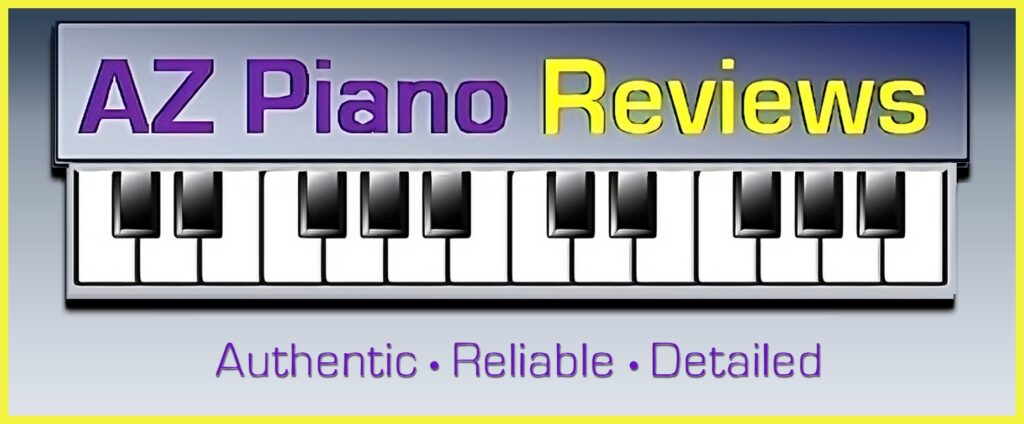
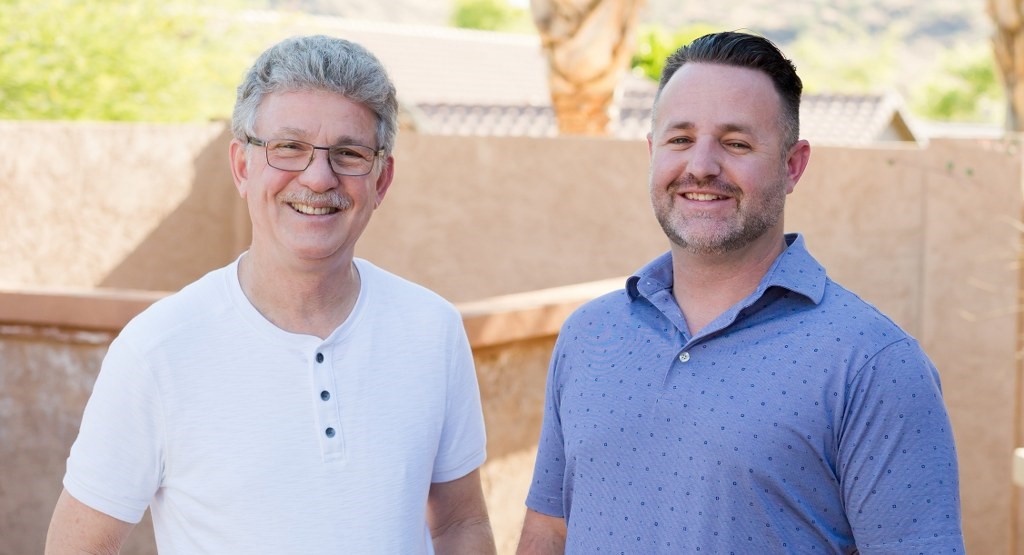

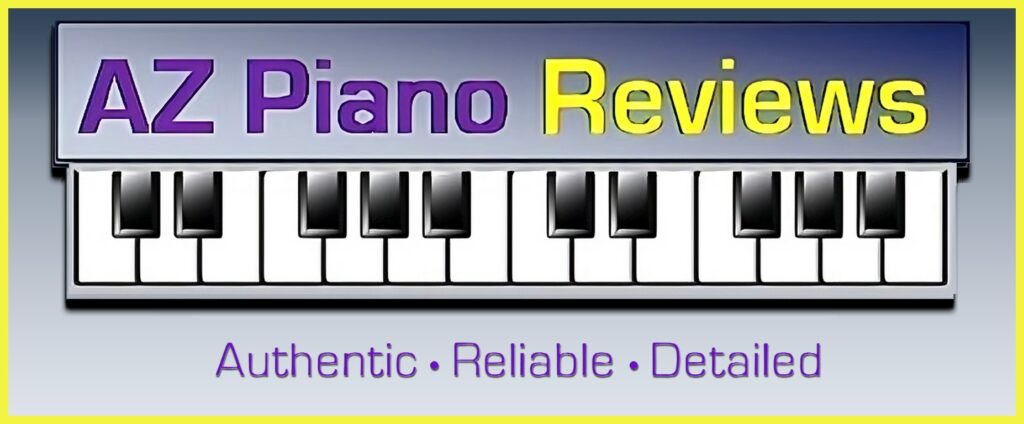



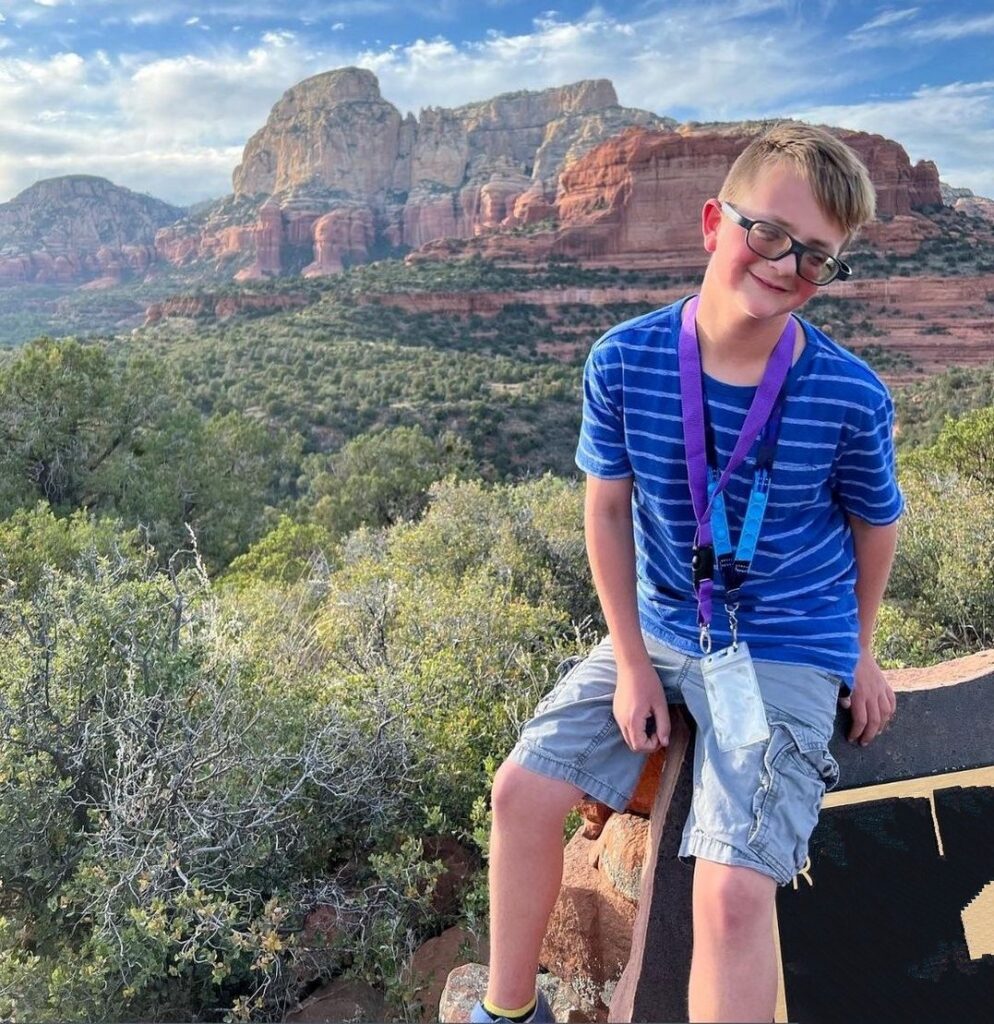
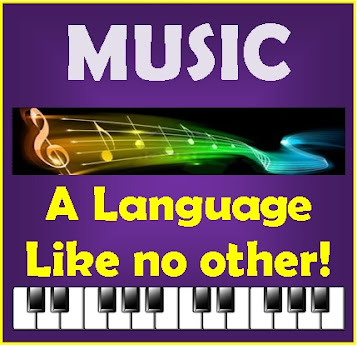
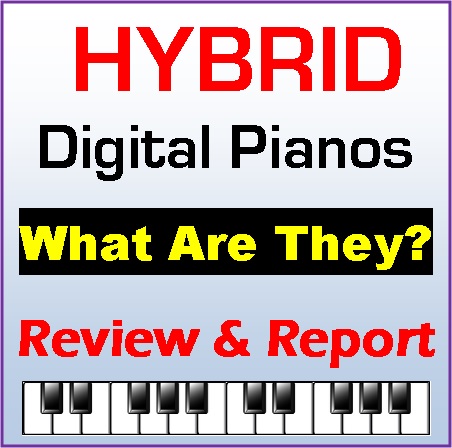
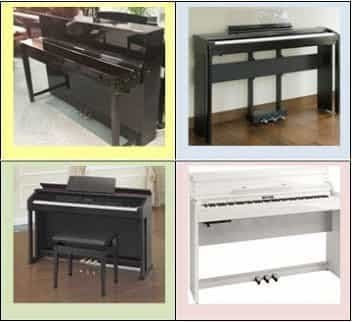

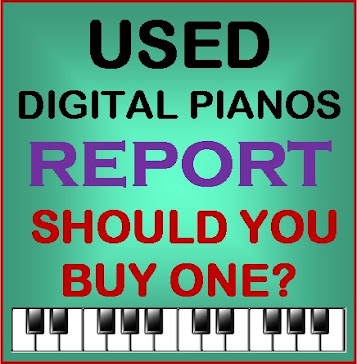

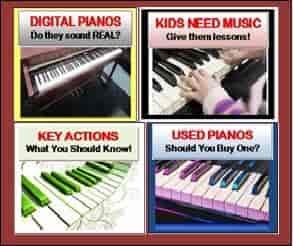
How much for the NV10 in US? I don't want to get scammed. 15999$ is way out of the line for me
I have nothing to do with Kawai retail or discount pricing. Piano stores in the US discount their piano prices lower than retail price. I would advise that you go into a US Kawai authorized store and find out what their discount price is on that model and then you'll know if you can afford to buy one.
Hi Tim, what are your thoughts on the CA58 vs CA78 vs CS8. thanks
Hi Tim! I really wanted Kawaii CA89 but local music stores around my area say” it’s been discontinued “ then try and push the CA99. CA 79 is more for my budget but find local dealers wanting $4,999 pretax and $150 delivery charge. I live in North Las Vegas. I plan to have my piano in the living room ( first floor) and yes I have room for it!
May I email you? I will need financing for 3 years. Can you help me?
yes, you can email me
Hello Tim, Thank you for your review of these Kawai digital pianos – very helpful, in my case particularly in respect of the Kawai NV10s.
Your reviews are particularly helpful in that all of the important conclusions reached are backed by detailed evidence which is clearly presented. On the back of your reviews would-be purchasers when they come to try the instruments for themselves have practical frameworks and pointers which they can use more confidently to evaluate matters for themselves. Thank you very much for that.
Two specific suggestions, if I may: (i) the inclusion of 'upweight' amongst the parameters shows you have a deep understanding of the feel of an action and how that might be determined (beyond merely 'subjective' considerations and individual preferences which of course will always be of prime importance). As you know, in general apart from the few hybrid models with the full action (minus the hammers) of an acoustic piano (such as the NV10s, the NV5s and the AvantGrand series), the upweights of digital piano actions are significantly higher than those of acoustic pianos, particularly so of acoustic grand pianos. The issue arising from this is that relatively high upweights can create a feeling of 'key pushback', a phenomenon which those of us used to playing acoustic grands can find very uncomfortable. High upweights as you know also, ceteris paribus, mean higher overall touchweight which in turn can make all the difference between an action feeling controllable or less so (particularly in rapid passages). So my first suggestion is that you continue to include upweight in the parameters you measure and discuss in your reviews.
(ii) In regard to the Kawai NV10s, I have found that the velocity curve is steeply concave, specifically from mp through mf to f. In practical terms this means in play that it is relatively more difficult for those of us who are not virtuosos to gradate one's dynamics smoothly. Consequently sudden lurches from one dynamic to the next are more likely, as though only a couple of distinct dynamic levels become playable rather than being able to execute a continuous, analogue type, progression (when that is needed, which is quite often in 'classical music'). This same point applies even more to the Roland LX708. However in complete contrast to the latter, the velocity curve of the new Roland GP-9 is almost perfectly linear across the whole of the dynamic range from ppp to fff. So my second suggestion is that you consider including 'velocity curve' as a standard additional parameter which you then discuss, perhaps beginning with the Roland GP-6 and the Roland GP-9 when you come to review those instruments.
On a related but different topic: if on the back of their remarkable breakthroughs with the GP-6 and GP-9, Roland can now solve the problem of pushback/high upweights (which prevails for all of their actions) they could if they wanted to, thereby become a formidable competitor in the acoustic piano market itself. {Briefly: my specific idea on the reduction of pushback is the inclusion of magnets as part of the mechanism of key return in Rolands' actions with the strength of those magnets controllable (within parameters) by pre-set (in Piano Designer') by the individual player to suit their preferences.)
Impressive info and excellent analysis in many ways. Always helpful in getting different perspectives like this one. Thank you
Just a few random thoughts on Kawai’s CA701, for any potential prospective buyers out there:
-I’m a few steps above “novice” but several steps below what I’d call “proficient,” so if you’re looking for comments or a knowledgeable review of the in-the-weeds technical aspects of the CA701 from a concert pianist’s viewpoint, look elsewhere.
-Above comments notwithstanding, if I could verify at least one technical point, it’s the realistic upweight on the key action. For me it came down to Kawai’s Concert Artist line versus Yamaha’s Clavinovas. Even though my experience and scope are limited, that’s one difference “even I” could appreciate–the Clavinovas sounded beautiful, too, but there was that pushback which for me was a big deciding factor.
-The CA701 is a dream machine for me. It’s an absolute pleasure to play, no fatigue, effortless. Life has been busy, but in my mid-50s here, I’ve resolved to try to get back into spending more time at the keyboard. This piano fully supports that; it makes me Want to come and play. The way it sounds and feels, I can easily imagine felt hammers striking steel strings like I wouldn’t even conceive of on my old Roland HP330 (yeah, things have come a long way in 25+ years, but hey…).
-The CA701 allows me to modulate dynamics more than I knew I could. And of course, as a pretty standard feature, I can plug in a pair of Beyerdynamic headphones and go to town without disturbing anyone.
As a guy who needs a little help from hearing aids (disclaimer), this piano still sounds amazing, and I love (again, as one with limited experience) learning to appreciate the differences in the voices of the built in pianos…although toying around with the impressive variety of organ voices and other instrumental and choral sounds has been rewarding as well.
-The touch screen interface to the left of the keyboard works nicely, quite sensitive and responsive. There is unfortunately, and I just timed this, about a 45 second wait from pushing the piano’s power button until the home screen comes up, bit annoying there…the consolation, however, being that you can start playing about 7 seconds after you push “on” (while the electronics for the touch screen are still churning). This will give you either the last piano or other voice that you were playing last time you powered off, or you can set it to go back to the default.
-It’s a very solidly built, very nice looking instrument, though the cloth speaker grill on top is something I had to get used to. It keeps me more honest about resisting the temptation to set a drink up there though, which I’ve been guilty of with previous pianos… The cloth grill also steered me towards going with black instead of rosewood, because the black-cabinet-to-black-fabric color match in my opinion is less jarring than the rosewood-cabinet-to-brown-cloth.
-I struggled a bit to not go all-in and buy the CA901 with the wooden soundboard, but I’ve been more than happy with the volume and the resonance from the CA701 (it occupies a front corner of a 37’x17′ great room, wooden ceiling over open trusses, 21′ to the peak) and don’t regret staying one step below the top of the line. Plus, I frankly preferred the keyboard cover and music rest design of the CA701, although I wish the score support pins (which I love having) felt sturdier. Appreciate the clear plastic doesn’t hide notes beneath it, but I’d rather these were of brass.
-All this being said, I could have bought more piano, I could have bought less piano. But if I had to go through the process again, I think the CA701 is still where I’d land. I’ve been quite well pleased with my choice.